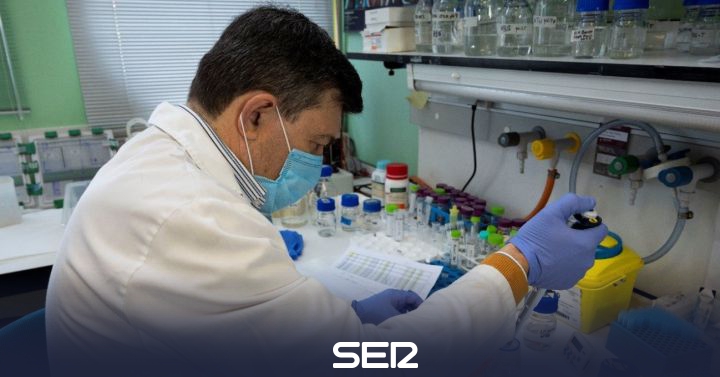A new serological test raises the rate of Madrilenians infected by COVID to 25% until June 2020. This new method is almost twice as sensitive as the current ones and, for that reason, detects more positive people who have been infected by SARS COV-2. Its development has been led by a CSIC center, the Astrobiology Center, and, when applied, to 880 blood samples obtained in Madrid, estimates that a quarter of the Madrid population (that is, more than one and a half million people) had already been infected for this coronavirus in June last year. The study carried out by the Carlos III Health Institute only gave a contagion rate of 11%, that is, less than half.
Researchers at the Center for Astrobiology have developed a new serological method that has greater sensitivity, because uses various SARS-CoV-2 proteins to detect antibodies.
This new test has already been validated in a trial and, when applied to 880 blood samples obtained in Madrid, gave a result of 26% positive in June of last year. Therefore, the study data indicates that approximately a quarter of the population of Madrid could have been infected by then, that is, more than a million and a half people, and this more than double what was detected by the study carried out by the Carlos III Health Institute, although this included the analysis of more than 100,000 blood samples.
The results of this study have just been published in a scientific journal Microbial Biotechnology.
Advantage
This new method that detects SARS COV-2 in blood samples is called ‘Brush’ And, according to its creators, it has several advantages. For example, it is capable of simultaneously detecting IgM and IgG antibodies in a microdroplet of blood serum. Furthermore, it is a scalable and automated method for the analysis of a large number of samples, thus enabling the digital processing of all the information obtained.
The great advantage of the ‘Scovam’ method over other existing methods is that uses several of the virus proteins to detect specific antibodies. “And having several viral proteins as a hook increases the probability of capturing antibodies and this makes it more reliable,” as explained to Cadena SER Victor Parro, the scientist who has led this project.
In addition, this new test allows the identification of antigenic patterns of the virus, since not all proteins stimulate antibody production with the same efficiency. This characteristic is especially important for the follow-up and monitoring of vaccines, as it allows us to find out, in the same test, with which viral protein the vaccine was developed.
Other apps
The new method can also be used to detect other relevant markers associated with the disease, as are the regulatory factors of inflammation and the immune response (for example, the famous “cytokines”).
‘Scovam’ have already been validated by analyzing 742 sera and showed almost twice the sensitivity of the commercial method. This data was confirmed four months later, after analyzing the prevalence of a subgroup of 78 positive sera (93% of them were still positive with ‘Scovam’, compared to 48% with the commercial method). Some sera had antibodies against only one of the virus proteins, which would explain the false negatives observed with other methods.
Finally, ‘Scovam’ is allowing to follow and monitor the production of antibodies in already vaccinated people. The first results indicate that those people who have had the disease respond with production of IgG antibodies within days of the first dose (5-10 days), while the response of people not previously exposed to the virus is delayed up to 15-21 days, and sometimes up to a week after the second dose.
This study has been coordinated by the CSIC and has had the participation of INTA, the Hospital Central de la Defensa Gómez Ulla, the National Center for Biotechnology (CNB-CSIC), the Center for Genomic Regulation (CRG) of Barcelona, and the Biomedical Research Institute of the University of Santiago de Compostela.
–


:quality(80)/cdn-kiosk-api.telegraaf.nl/f8c348a6-cd99-11eb-b813-02d1dbdc35d1.JPG)